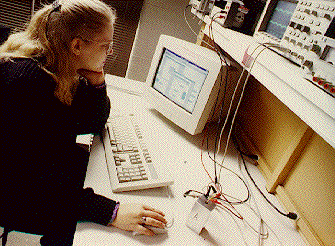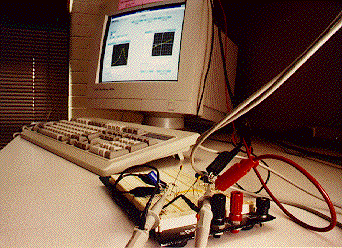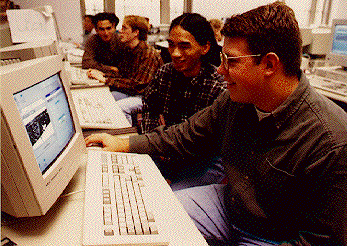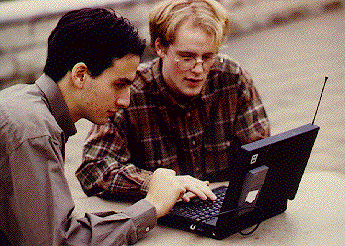| By interfacing instrumentation with the computer, data aquisition can be automated. In this picture, the computer system had to be more flexible since the circuit under analysis was unknown (Lab 8: The Black Box). Comprehensive automated testing decreases testing time and the types of errors made, at the cost of software development time. |
 |
 |
| Before leaving the lab, the system under test can be hooked up for analyses made after the lab has closed. To supplement lectures, professors can leave example circuits connected for students to test. Only one example needs to be constructed for multiple people to profit from its analysis. |
| Students could experiment from their dormitory rooms or from computer clusters available to the campus. In any case, they learned the challenges associated with remote systems... |
 |
 |
| .. such as in Lab 9: Martian Rescue. Here, we can see a panoramic view of the Martian landscape set up on the lab bench. The camera tripod on the workbench was the student's only link to the Martian landscape during this lab. |
| In future sessions of this class, cellular connections may be made to the lab... remote and mobile experimentation! Parts of the cellular network at Carnegie Mellon are already operational. |
 |











 Comments/Bugs to badelt+@cmu.edu
Comments/Bugs to badelt+@cmu.edu